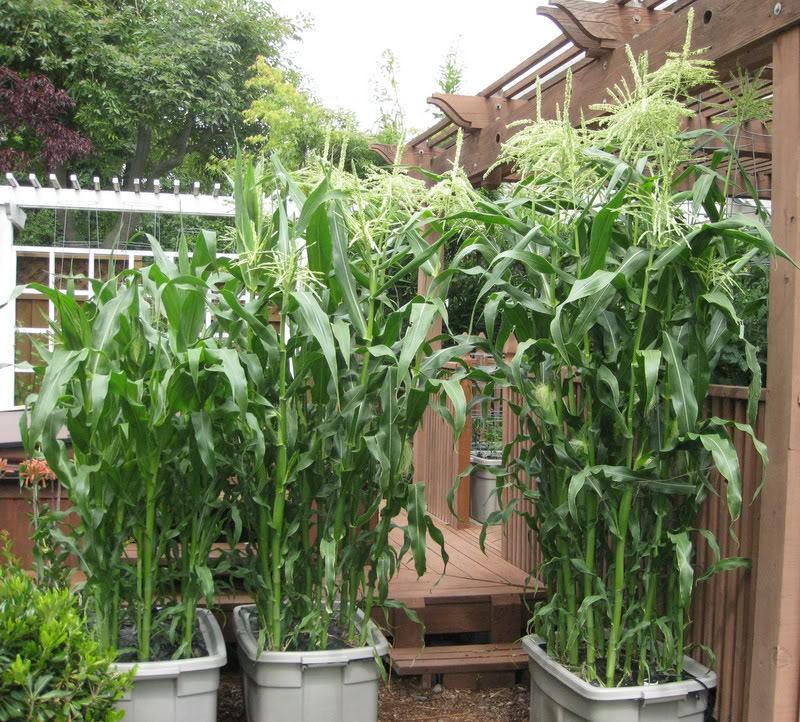Pollinating In The Corn Garden...
Pollination is the process by which pollen grains are transferred from the tassel to the silks.
Fertilization does not occur until the male reproductive cells from the pollen grains actually unite with female reproductive cells from the ovule via the silks.
Therefore, successful pollination does not always result in fertilization.

On a clear day... We can see Vicky's
The Basics

The boys and the girls... Getting together!
The pollen on the
tassel must arrive at the silk on the ear. Thank you Mr. Wind!
Tassels
The male flower of the corn plant is known as a corn tassel. After the bulk of the plant growth is complete, tassels will appear on top of the plant. Corn plant tassels can be green, purple or yellow. Advertisement The tassel's job is to produce pollen that encourages the growth and ripening of the corn ear. Wind carries the pollen to the female flower, or the silk, on the corn plant.

The stages of growth
are interesting:
VE is emergence from the ground
V# is the number of leaves on the stalk*
VT is when the last tassel is out
R is reproductive stages
*Leaf stages are usually described as "V" stages, e.g., V2 = two leaves with visible leaf collars. The leaf collar method is generally the most widely used method by university and industry agronomists in the U.S.
The male flower of the corn plant is known as a corn tassel. After the bulk of the plant growth is complete, tassels will appear on top of the plant. Corn plant tassels can be green, purple or yellow. Advertisement The tassel's job is to produce pollen that encourages the growth and ripening of the corn ear. Wind carries the pollen to the female flower, or the silk, on the corn plant.
Corn (Zea mays) is actually a member of a family of annual grasses and while it doesn't produce showy petals, it does have bath male and female flowers on each plant. The male flowers are called the tassel. That's the part that looks like grass gone to seed that blooms at the top of the stalk. As the tassel ripens, pollen is shed from the center spike downward to the lower fronds. The female parts of the stalk are the ears located at leaf junctions and the female flowers are the silks. Each strand of silk is connected to one kernel of corn. Pollination occurs when pollen touches the strand of silk. This seems like pollination should be easy. The pollen drifting down from the tassel should pollinate the ears below, right? Wrong! 97 percent of an ear's pollination comes from other plants, which is why it is important to know when and how to pollinate corn.
Up Close And Personal
The male flower of the corn plant is known as a corn tassel. After the bulk of the plant growth is complete, tassels will appear on top of the plant. Corn plant tassels can be green, purple or yellow. Advertisement The tassel's job is to produce pollen that encourages the growth and ripening of the corn ear. Wind carries the pollen to the female flower, or the silk, on the corn plant.
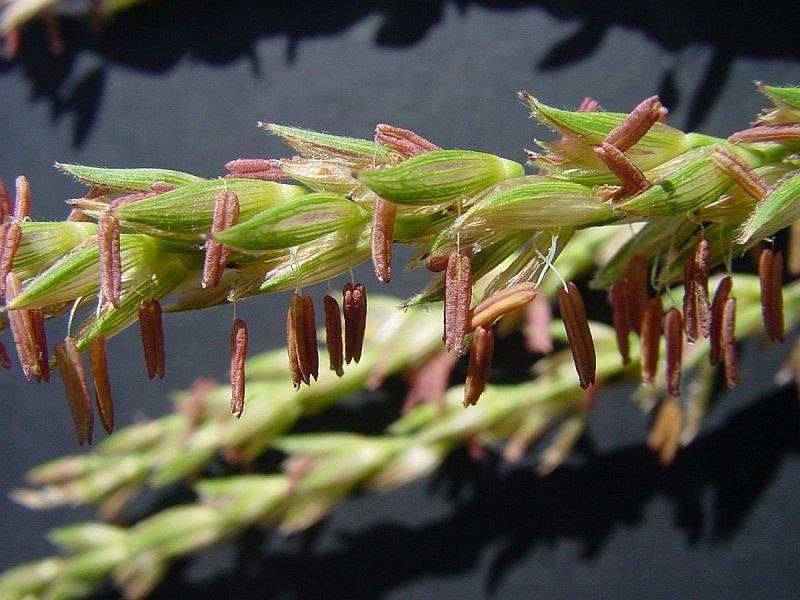
The boys are ready to be blown away and into the female silks
Pollen shed (anthesis) begins shortly after the corn tassel is fully emerged from the whorl (VT growth stage). Pollen shed may occur for up to 2 weeks, but usually lasts for 5 to 8 days, with peak shed by about day 3.2 Flowering typically occurs in the morning and may be delayed during rain or excessive humidity. Very hot, dry conditions can reduce pollen viability and decrease length of pollen shed.
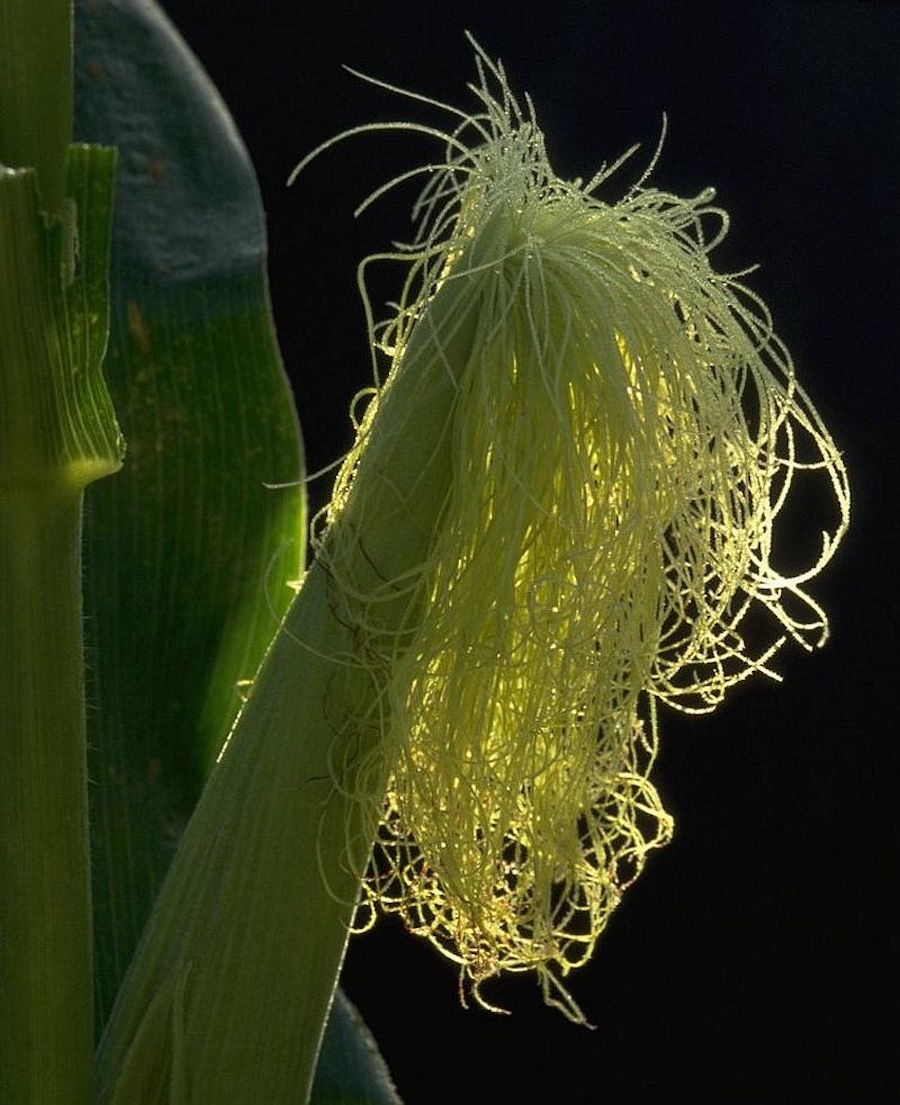
A corn plant at silking stage. A strand of silk can grow 1 to 1.5 inches per day until pollination of the individual silk occurs.
Silks from the base of the ear are the first to emerge from the husk, followed by those progressively closer to the ear tip. Silk longevity is around 10 days under typical growing conditions, but because not all silks are exposed simultaneously, viable silks may be present for around 14 days. In addition to natural senescence, heat or moisture stress can desiccate the silks prematurely.

Some folks will break one tassel off and brush the silk to help insure ears get pollinated.

Closeup of corn silks. Notice small hairs that help capture pollen grains
Pollen that lands on a silk is captured by small hairs called trichomes present on the surface of the silk. The pollen grain germinates immediately, producing a pollen tube that grows down the length of the silk, resulting in fertilization of the ovule within 12 to 28 hours. Although many pollen grains may germinate along the surface of the silk, only one grain will generate a pollen tube resulting in fertilization.
Within a few days of successful fertilization, silks will detach from fertilized ovules. This can be observed by performing the "ear shake test."3 Make one long cut through the husk leaves from the base of the ear to the tip. Slowly and carefully unwrap the husk leaves being careful not to pull any silks away.
When holding the ear from the base end, you will notice that silks either drop away from the cob or recontent attached.
When most of the silks easily drop away from the cob, you can be assured of successful pollination. Pollination progress can be determined by estimating the percentage of silks that fall away from the ear and random sampling can help indicate progress for an entire field.

After gently removing husks, observe to see if silks are attached or drop away. Fertilization has not yet occurred in ovules that still have silks attached.
How Corn Pollination Happens Corn
Corn is actually a member of a family of annual grasses and while it doesn't produce showy petals, it does have bath male and female flowers on each plant. The male flowers are called the tassel. That's the part that looks like grass gone to seed that blooms at the top of the stalk.
As the tassel ripens, pollen is shed from the center spike downward to the lower fronds. The female parts of the stalk are the ears located at leaf junctions and the female flowers are the silks.
Each strand of silk is connected to one kernel of corn. Pollination occurs when pollen touches the strand of silk. This seems like pollination should be easy. The pollen drifting down from the tassel should pollinate the ears below, right? Wrong! 97 percent of an ear's pollination comes from other plants, which is why it is important to know when and how to pollinate corn.
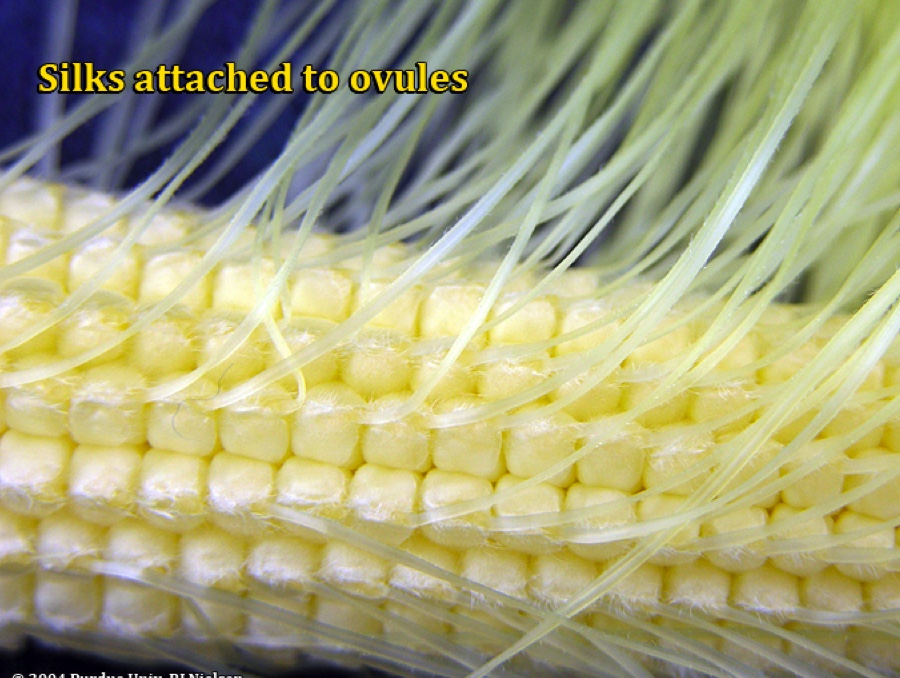
Pre-fertilization

Post fertilization
Highly variable flowering dates in a given field can reduce total pollen available to receptive silks. Also, severe heat or moisture stress may delay silking and hasten pollen shed to the extent that little pollen recontents when silks become receptive. Poor pollination resulting from asynchronous pollen shed and silking can result in barren ears or unfertilized ovules occurring contently toward the tips of the ears.

When white and yellow corn get together
Normally, pollination is a continuous process with fertilization occurring gradually along the ear as silks emerge. A mass of long, green silks is an indication that pollination has not occurred.
This could be the result of silk emergence after most pollen has shed, or delayed pollen shed due to extended rainy, cloudy conditions. The latter should be of little consequence if flowering resumes prior to silk senescence.
However, anything that interferes with the optimum window for pollination could potentially reduce fertilization and kernel set.
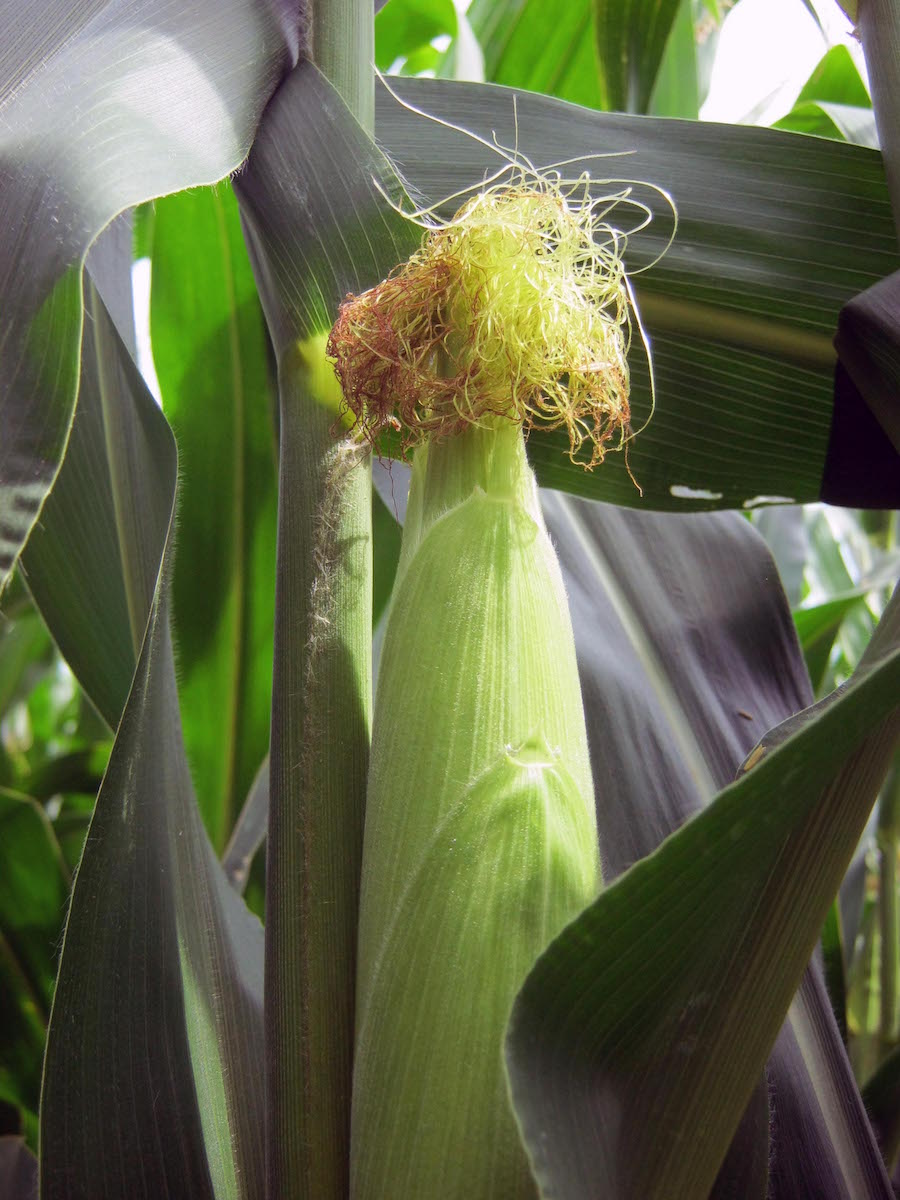
Corn silks on top of a growing ear. These silks have already been fertilized
Successful fertilization does not always result in a harvestable kernel. For several weeks following fertilization, reduced photosynthate caused by cloudy conditions, moisture stress, heat stress, or any factor reducing photosynthetic rate can cause fertilized ovules to abort. This normally occurs in the youngest kernels that are located at the tip of the ear.
Corn is ready to be picked as soon as the ears have completely filled out. This goes for sweet corn and roasting ears.You can tell when this happens by feeling the end of an ear. If it's rounded or blunt rather than pointed, the ears are ready. The silks also dry up when the ears are almost ready to be picked

How to Hand Pollinate Corn
Timing is everything. Once you have the when, how to hand pollinate corn is a snap. Literally! Ideally, hand pollinating corn should be done in the morning, but many gardeners have bosses who object to taking time off for such endeavors, so early evening, before dew fall, is your best alternative. Snap the tassels off a few stalks and use them like feather dusters. Dust over the emerging silks at each ear. You'll be hand pollinating corn for about a week, so use your judgment as to how many tassels you snap per dusting. Start at the opposite ends of your rows each night to help equalize the distribution. That's it! You've successfully completed your manual pollination of corn. A relaxing stroll through the garden and a little light wrist action is all it takes. You'll be surprised at how relaxing hand pollinating corn can be. Sure beats a lot of other garden chores and the rewards will be well worth the time.
So, now you know everything! So it is time to go to the store, get a couple of containers and grow your own corn at home!
